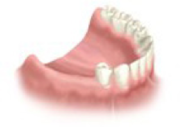
If you are missing several teeth, implant-supported bridges can replace them. Dental implants will replace both your lost natural teeth and some of the roots.
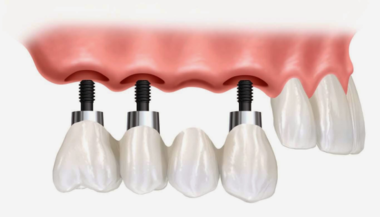
Main benefits of implant bridges
- A fixed, stable & secure solution
- A long-lasting solution, often for life
- Healthy, neighbouring teeth are not part of the reconstruction like in a bridge
- Dental implant bridges are the only fixed alternative in situations where no teeth are present in the molar region (free end gap) or where no natural neighbouring teeth are suitable as abutments (anchoring teeth) for a fixed bridge
First visit involves a comprehensive consultation including medical history, clinical inspection, x-rays, DVD scans and implant simulation. A detailed treatment plan including a breakdown of costs and schedule will be made.

Typical free end gap situation
At your 2nd visit implant placement and temporary restoration will be done.You will never leave our practice without temporary teeth whilst the implant osseointegrates (fuses to your bone). Implant bridges are normally done in a conventional implant procedure where a healing abutment (unsubmerged healing) or cover screw (submerged healing, below the gums) is put on the implant. Immediate loaded implant bridges, where a temporary bridge is loaded onto the implant right after the implant placement, can only be done if multiple implants have been placed.
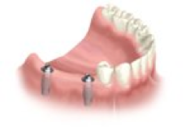
The osseointegration phase (the healing in phase of your implants) takes around 3 months (complex cases involving bone or soft tissue replacement take longer).
At your 3rd visit we will take impressions which allow our technician to make your final implant supported teeth.
At your final visit your implant supported teeth (fixed implant bridge) will be integrated (fine tuned) to your bite and mastication.
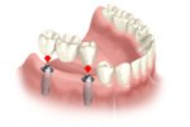
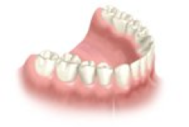

Screw retained implant bridge
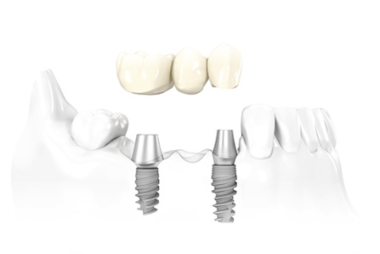
Cemented implant bridge

